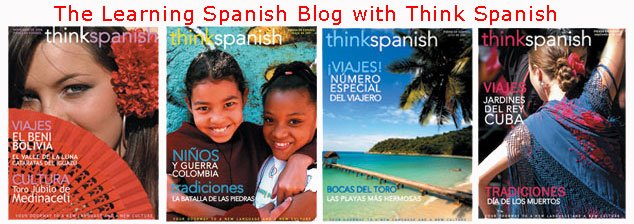 Study Spanish in CUSCO, PERU
Study Spanish in CUSCO, PERU
This month Think Spanish Magazine has selected Amerispan's Cusco, Peru Spanish School as its "Cool School of the Month." Cusco was once the capital of the Incan empire. Visitors can see the ancient ruins there as well as hike through the lost city of Machu Picchu. Peru is in the heart of South America and holds various niches for exploration: the Andean mountains, the Pacific Ocean, and the Amazon Rainforest.
Amerispan is well known for organizing study abroad programs across the world. This particular school, called Academia Latinoamericana, was launched in beginning of 2001.
An Ecuadorian family started the school in Quito in the early 90s; the two daughters and son all worked at the school but also attended university and studied abroad in the US. Sandra, one of the daughters, her husband and two sons moved to Sucre when Amerispan opened the school. After Cusco's first director from the US left at the end of 2002, Diego (the son) and his wife moved to Cusco. They believed the only way schools are successful is if they are owner- operated.
Since the schools are owner-operated, students receive excellent service. Amerispan always receives strongly positive evaluations for their schools, in part for this very reason.
Their methodology is the same at every school, but exercises and examples are customized to the particular country. I think that although it is much harder to teach in groups, it is usually a better way to learn because you can do a variety of of fun group drills and games. More importantly, however, you aren't the only one making mistakes! In private classes, your teacher is always correcting you, and that's no fun! In Cusco, classes hold a maximum of 4 total students, usually just 2 or 3, you are still moving pretty fast, much faster than, say, a big class at a foreign university. Also, you eliminate the negatives of private classes and gain benefits of group. I think the best program at the Cusco school is the combination 4 hrs/day of group class and 2 hrs/day of private class to focus on problem areas (for things everybody seems to get and you just don't!).
There are very few schools that have methodologies and deliver the service as well as Academia Latinoamericana. I'd say there are between 5 and 15 in all of Latin America, and this school is in contact with many of these schools in other countries--sharing ideas and constantly improving the methodology.
The Spanish learning methodology is right on and the ambiance is perfect for improving Spanish learning while taking in fascinating culture and rich history. Think Spanish recommends this program, for a comprehensive learning experience (not to mention... a little bit of fun!) Check out
Amerispan and their
Cusco program!
Hasta pronto!

 There are many colorful customs associated with the holiday, including food and decorations. Ofrendas are set up in many of the houses for the deceased relatives. Generally ofrendas are set up on a table covered with a tablecloth and papel picado. They are decorated with sugar skulls, candles, cempasuchil flowers, and paper mache skeletons. Plates with the favorite foods of their dead relatives are also set on the ofrenda. Some have also liquor and cigarettes. On the ofrendas for the deceased children toys are included. Festivities also include traditional foods such as pan de muerto (bread of the dead), which is often made into the shape of a tiny skeleton.
There are many colorful customs associated with the holiday, including food and decorations. Ofrendas are set up in many of the houses for the deceased relatives. Generally ofrendas are set up on a table covered with a tablecloth and papel picado. They are decorated with sugar skulls, candles, cempasuchil flowers, and paper mache skeletons. Plates with the favorite foods of their dead relatives are also set on the ofrenda. Some have also liquor and cigarettes. On the ofrendas for the deceased children toys are included. Festivities also include traditional foods such as pan de muerto (bread of the dead), which is often made into the shape of a tiny skeleton.





